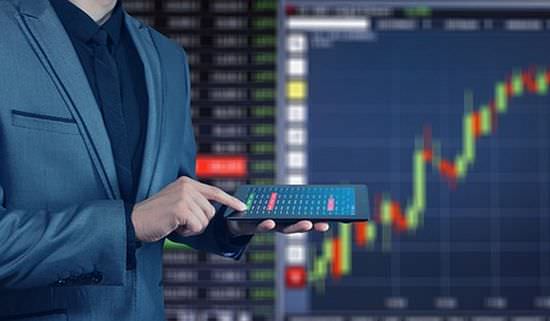The Global Algorithmic Trading Market Report states that the algorithmic trading market is increasing at a compound annual growth rate (CAGR) of nearly 10.3% from 2016 to 2020. Currently, more than 75% of the trades made globally are automated, and algorithmic trading contributes to a significant part of it.
With the advancement of technology in financial market applications, high-frequency trading and algorithmic trading are being accepted by markets all over the world. Within a decade, it has become one of the most common trading tools on developed exchanges and is also growing rapidly in developing countries.
Algorithmic trading, also known as algo trading, automated trading, or black box trading, is the process of utilizing programmed applications, which follow a defined set of instructions (algorithms). This is done in order to place trades to make a profit at a frequency and speed that a human trader cannot. The specified set of instructions is based on price, time, quantity or any analytical pattern.
As well as generating profitable events for traders, algorithmic trading makes the buying and selling process more systematic by eliminating the influence of human emotions on trading actions.
Benefits of Algorithmic Trading
Traditional investment institutions and brokerage firms are developing technology-savvy algorithmic applications and platforms to participate in global markets. In addition to return on investment, algorithm trading also provides useful market intelligence for picking up long-term trade settlements. All of the reasons that make algorithmic trading more popular is because you are likely to earn more than trading manually.
Let’s take a look at some of the advantages of investing with algorithmic trading.
-
Retest
The process of checking trading techniques based on authentic information to ensure that an investment strategy will be successful in the market is known as backtesting. Algorithmic trading mostly uses backtesting in which the trader applies a series of precise orders and tests them on factual data before investing in live trading.
Backtesting allows the trader to assess and refine the trading approach and to ascertain the probable methods for profit, that is, the exact value that an investor can win or lose per unit of risk.
-
Minimizing Human Sentiment
Algorithmic trading reduces human sentiment during the whole trading process. By using algo-trading and managing certain emotions such as anxiety and greed, investors can follow certain plans without bias and make the process easier.
Considering that trades are executed automatically after fulfilling each trading rule, the investor will not be able to stop or doubt the trade. Additionally, algorithmic trading can help traders curb overtrading (buying and selling at every turn).
-
Disciplined Trading Process
When set trading rules are followed, and trades are executed automatically, control is maintained even in volatile markets. Some traders often lose trading discipline due to factors such as fear of losing, or the tendency to get more profit from certain trades.

Algorithmic trading ensures that trading plans are followed exactly, and mistakes are minimized. For example, if you wanted to sell 500 shares, it would not be wrong to enter an order to buy 500 shares.
-
Optimize
When it comes to trading, one of the biggest hurdles is designing trades and optimizing them. In cases where a trading plan has the potential to become successful, investors who ignore the set rules limit their chances of winning. But with algorithmic trading, investors can evaluate the performance of their previous trading strategies and find useful ways to improve their strategies.
This process also allows them to recognize trends such as how and why certain trades work well during certain times of the day, or with certain sets of currencies. It can optimize trading opportunities to help choose the best approach for your trading.
-
Diversification
Algorithmic trading allows investors to trade multiple accounts or multiple strategies at the same time. This potentially increases the risk factor, but algo-trading strategically leverages the algorithm to balance the risk of unfavorable price movements.
Machines efficiently perform details that humans find difficult to complete in a matter of seconds. Because computers can analyze various markets, generate orders, and monitor trades, work is done at a faster pace, and investors get better opportunities to diversify their trades.
-
No Need for Constant Monitoring
Since the algorithm controls the trades, investors do not need to spend time examining the market as trades can be executed without any supervision. Time spent monitoring exchanges is drastically reduced giving you the opportunity to engage in diverse trading activities. For more information, visit this website.
We can conclude that algorithm trading can increase the profits of every trader and also provide accurate, fast and sound market insights. However, it is also necessary to develop high-tech algorithms with maximum efficiency and implement the best security measures to protect them from cyber attacks.








